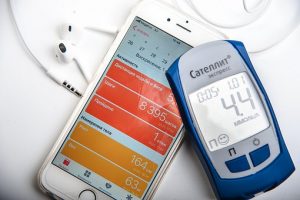
Technology is rapidly changing the world of some type 1 diabetics. The creation of Freestyle Libre (a small white patch which provides a continuous indication of blood sugar levels) has revolutionised diabetes care.
The most widely used indicator of blood sugar control is hba1c. Hba1c is very useful but is also quite crude. It gives an average of the previous three months but does not show you how this average was achieved.
I’ve usually been a well-controlled diabetic but in 2018 personal circumstances changed, and my sugar levels began to spiral out of control, swinging from highs of 15 and above and crashing into hypos. My hba1c reading was a low reading of 6 percent. After losing consciousness, I was desperate to access more support. Accessing this was difficult. Because of a history of good hba1c readings, I was told not to worry. I tried to obtain a faster acting insulin (Fiasp) but could not provide the evidence needed to obtain it. Continue reading “Diabetes and the digital divide: A patient’s perspective.”





